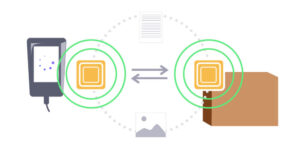Table of Contents
ПереключатьВведение
The scope of Near Field Communication (NFC) extends globally, with its pivotal role in enabling low data rate, short range communication. Inter-device communication in NFC is governed by defined protocols—NFC-A, NFC-B, and NFC-F—each providing a unique signaling framework for the information exchange process. As NFC is intrinsically linked to Radio-Frequency Identification (RFID) technology, these signaling modes bear similarities to RFID types, tailored for specific use cases and regional preferences. The overview hereunder delineates the nuances among these NFC signaling types.

Understanding NFC Signaling Modes
NFC-A: ISO/IEC 14443A
- Signaling Foundation: Derives from ISO/IEC 14443A, comparable to RFID Type A.
- Encoding Technique: Utilizes delay encoding (Miller encoding) coupled with Amplitude Modulation (AM).
- Modulation Specifics: Transmission of binary data at an approximate rate of 106 Kbps, employing 0% to 100% signal level variation to differentiate binary values.
- Data Distinction: A full transition between signal levels denotes binary information, facilitating unambiguous data interpretation.
NFC-B: ISO/IEC 14443B
- Signaling Foundation: Based on ISO/IEC 14443B, mirroring RFID Type B.
- Encoding Approach: Implements Manchester encoding, a method where data representation is characterized by transitions rather than static levels.
- Modulation Specifics: Embraces AM at a subtler 10% level change to discern binary data.
- Data Distinction: Binary 0 is represented by a 90% signal, ascending to a full 100% for binary 1, with a prescribed zero crossover at each bit’s midpoint for clarity.
NFC-F: JIS X6319-4 (FeliCa)
- Signaling Foundation: Lies on the FeliCa standard under JIS X6319-4, presenting an accelerated RFID communication format.
- Regional Preference: Holds a dominant presence in Japan with widespread application.
- Usage Diversity: Integral to financial transactions (credit/debit cards), mass transit access (subway ticketing), and secure identification (offices, residences).
- Reliability: Renowned for its efficiency and quick processing in high-density user environments.
For a deeper understanding of NFC including operational modes, frequency, data rates, tag types, applications, and signaling varieties, one can consult the comprehensive NFC Basics Article. This resource offers an expanse of knowledge on NFC, elucidating how its diverse applications have been revolutionized by distinct signaling protocols, catering to an array of industries and functionalities.
